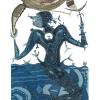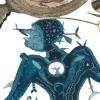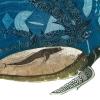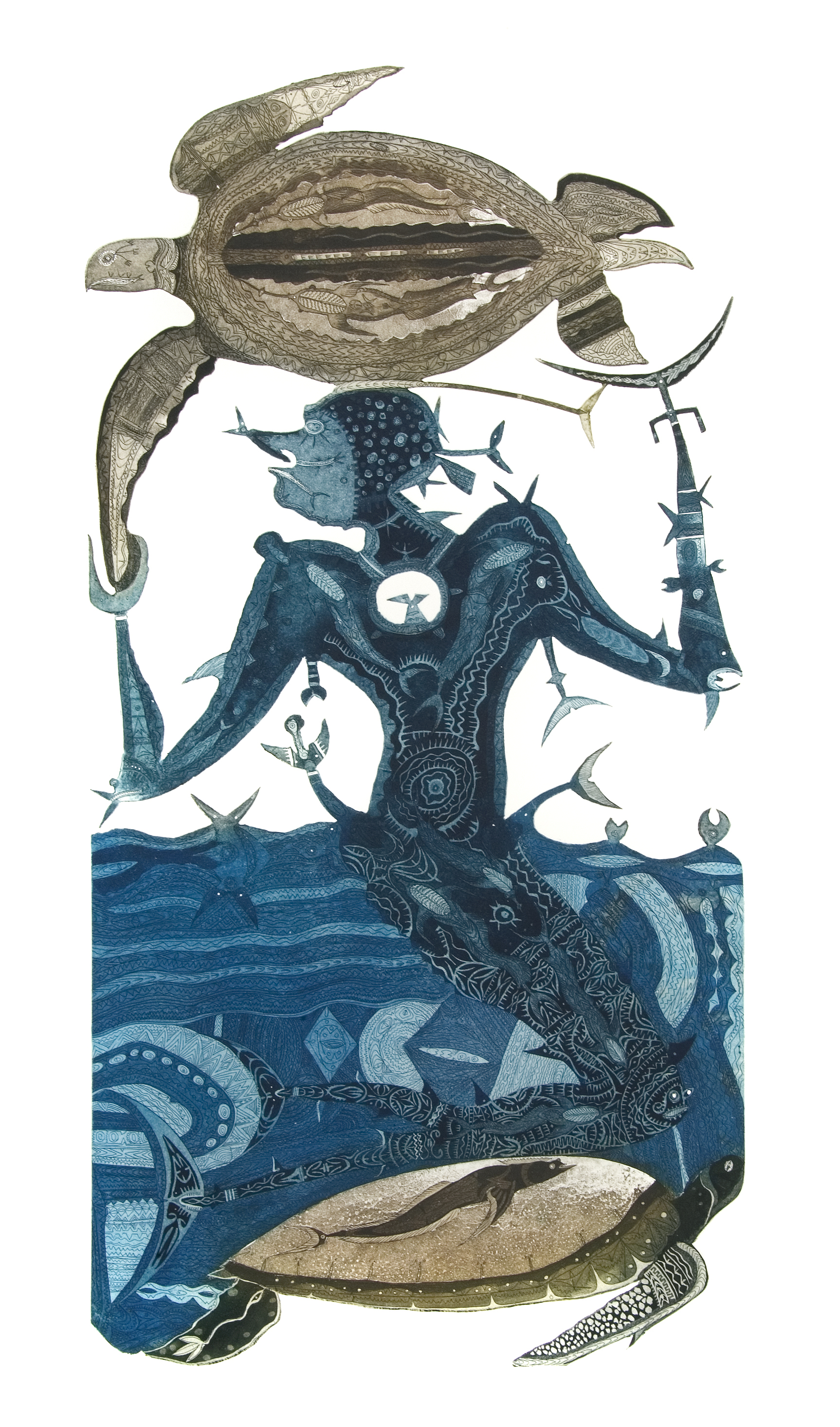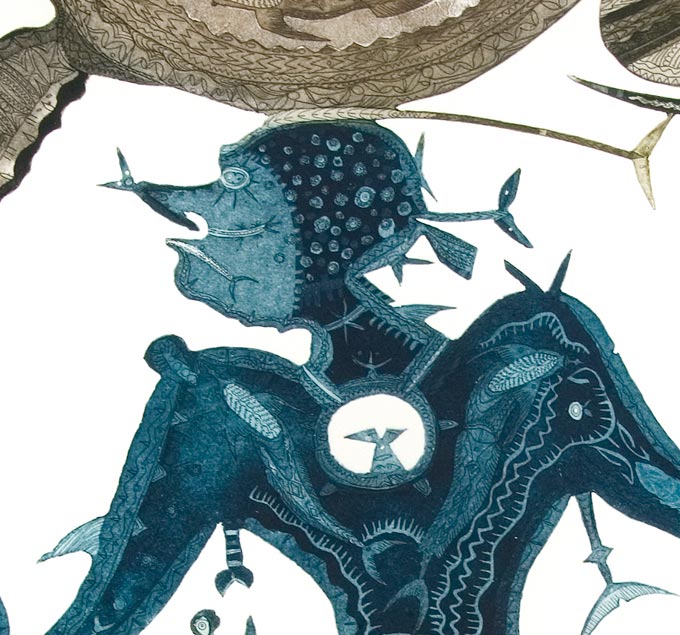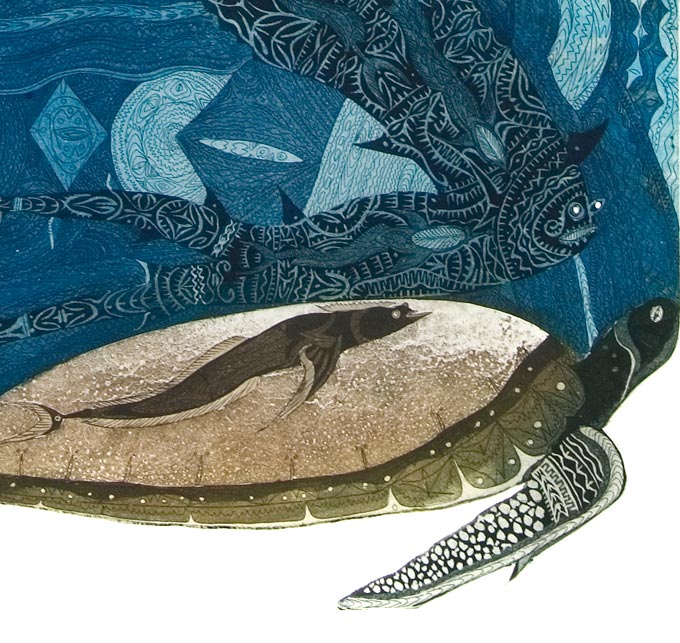Dokeran is an old legend belonging to the people of Badu Island, just like the Aboriginal artist Dennis Nona. It tells the story of a man—Dokeran—who caught a turtle and moved along the shores of the island, only to be transformed into a rock that can still be seen today on Badu.
It was Dokeran’s indecision about where to kill the turtle that led him to wander across the island’s coastline, through different locations that are still known to the local community.
Dokeran lived in the south of Badu, in Yaza, where another legendary figure, Bia, created one of the island’s sacred sites. He caught the turtle using a gapu or "sucker fish," a traditional method also used to hunt dugongs. The gapu is depicted on the turtle's back at the top and bottom of the print. Dokeran brought the turtle to Delalbibi and other beaches within the Argan tribal area. He then walked to Gaubut, Dugorr, Kotaid, Kotinab, and Sesseraen Gagait—a place linked to the story of Sesserae, which was the subject of the artist’s first monumental linocut.
At each place he stopped, Dokeran thought about killing the turtle but changed his mind. He eventually did so at Mayan Kula, before returning to Yaza, where he was transformed into two rocks that can still be seen today on the side of a hill at a place called Dokeran Kakurr. In Dennis Nona’s print, Dokeran is shown carrying the turtle on his head and looking backward—a symbol of his indecisive nature.
ed. /45
